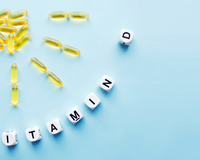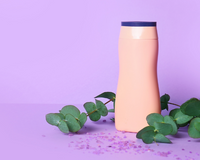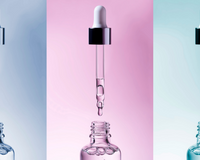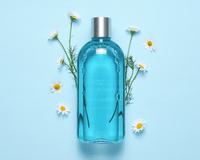Best Shampoo For Color Treated Hair
What's the best shampoo for color treated hair? Gone are the days when hair color was reserved for the elderly to hide grey hair. Hair coloring in various colours according to one's preference has become fashionable among the youth these days. Most women dye their hair without even realizing what precautions they need take to keep their color. If you do not properly care for your colored hair, you will soon notice that the color is losing faster than it should be. So, if you want to retain your hair color for a longer time, you should use hair care products designed specifically for colored hair.
Shampoo is an essential hair care product that colored haired individuals should select with caution. Normal shampoos don't always have all of the ingredients that color-treated hair needs to stay hydrated and lustrous. Shampoos for colored hair are those that do not fade your hair color after each wash and leave your hair smooth, soft, and shining.
How To Choose The Best Shampoo For Color Treated Hair?
When you use chemicals and colors on your hair, they just drain the moisture from it, therefore the shampoo you use must restore and preserve the natural balance. The dryness following color treatment is most noticeable towards the ends, which are prone to splitting. As a result, choose creamy shampoos with gentle cleaning chemicals.
It's not uncommon for your hair color to appear dull and lifeless after a few washes. It's also starting to fade. To avoid this, use the best Sulfate-Free Shampoo for Colored Hair, which must have an acidic component such as citric acid to clean, restore shine, and revitalize your hair. It's also responsible for giving your mane that healthy sheen.
Color-treated hair is prone to become dry and humectant, which means it attracts and absorbs all of the moisture in the air around it, resulting in puffiness and frizz. The more heat tools you use on your hair, the more frizzy it becomes.
Sodium Lauryl Sulfate
Sodium lauryl sulfate and sodium laureth sulfate are the two most prevalent components in shampoo. They are, after all, colour stripping agents. They should not be included in your shampoo. Artificial colors in shampoos frequently trigger allergic reactions, impairing the shampoo's ability to accomplish its essential purpose of washing the hair. Because of the pollution our hair is exposed to, "natural" additives typically fail to provide any benefit, but they do raise the price of the product. Formaldehyde, which is included in all shampoos, should be avoided as well.
The finest shampoo for colored hair should ideally prolong the life of your color-treated hair, increase its health, enhance the color without leaving any residue on the scalp, and prevent the color from bleeding out on whatever clothes you're wearing. In other words, it should save you money on salon visits. As a result, here are some of the recommendations that you should follow.
Whether you're wearing a dazzling red, balayage, platinum blonde, or something a little more daring (love that mermaid hair! ), you're undoubtedly already aware that your hair need some extra TLC. But, with so many choices, how can you know which shampoo is best for color-treated hair?
What Is The Process Of Hair Color Treatment?
Have you ever considered how cool it is to be able to change the color of your natural hair? It's a fun way to change up your appearance or bring out your natural color. But how does it function? It's crucial to comprehend the differences between semi-, demi-, and permanent hair color treatments in order to grasp the science behind them. Color molecules coat the outside of your hair in semi-permanent hair color, which lasts several weeks depending on how often you shampoo. It enhances or refreshes your natural color, but it fades with each shampoo.
Demi-permanent hair color uses the same process as semi-permanent hair color, but only penetrates your hair's cuticle minimally. As a result, it lasts a little longer. It's another wonderful color refresher that can help conceal gray, but it won't brighten your hair. Highlights oxidize your hair, which removes colour. The color you get depends on how long you keep the "oxidation agent" on your strands (typically bleach or hydrogen peroxide). The same may be said for bleaching your overall color, which can leave you with a yellow tint if kept on for too long. (Keratin, the protein found in your hair, is a pale yellow tint by nature.) If you want to achieve a platinum blonde look, you'll need to bleach your hair first and then tint it.
An oxidant and ammonia are usually used with a coloring agent in permanent hair color. Color molecules penetrate your hair's cuticle to change the melanin in your strands with this product. These last the longest, but they also cause the most harm to your hair.
How to Keep Your Color-Treated Hair Looking Great?
If you want your color to last, you'll need to put in some effort, whether you go to a salon or utilize an at-home treatment. All chemical treatments deplete the flexibility of your hair, increasing the risk of breakage, dryness, and split ends.
So, if you're finding that your hair doesn't feel the same weeks after dyeing it, know that you're not alone. It's only a matter of time before you step up your game! Read on for answers to some frequently asked questions about color-treated hair, as well as how to prevent damage using the correct shampoo for your hair type.
What Are The Most Common Color-Treating Hair Concerns?
The number one hair concern after a color treatment is fading, which should come as no surprise. Specifically, how to slow things down and deal with it. As much as possible, avoid using heat on your hair. If you must blow dry, curl, or straighten your hair, use a heat protectant beforehand!
Avoiding too much sun, staying away from chlorine, and getting regular trims are all good things to do for your hair. Before shampooing your hair, wait 48-72 hours after coloring it. When you do, choose a color-safe shampoo that is appropriate for your hair type. Maintain a modest water temperature while showering. The color will wash off easier if you use hot water to open the cuticle of your hair.
Wash your hair less frequently — keep a decent dry shampoo on available in case you need it in between washes.









